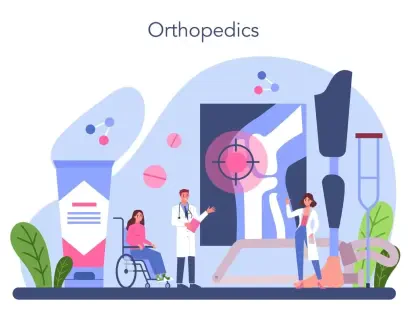Faisal Zain is recognized as a healthcare expert, particularly in the realm of medical technology, with a strong background in manufacturing medical devices critical for diagnostics and treatment. His efforts have consistently driven innovation, making him a key figure in discussions around health information technology, particularly at a time when the industry is considering the future of comprehensive data exchange networks like TEFCA.
Can you explain the significance of more than 1,000 Epic hospital customers transitioning to TEFCA?
With over 1,000 Epic hospital customers transitioning to TEFCA, the move is significant because it marks a major step in advancing the accessibility and interoperability of health information across various care locations. This transition supports seamless and secure data sharing, enhancing a patient’s healthcare experience by providing practitioners with all necessary information for informed decision-making at the point of care. The sheer scale of customers involved highlights the industry’s commitment to improving healthcare data exchange on a nationwide level.
What role does Epic play in the Trusted Exchange Framework and Common Agreement (TEFCA)?
Epic serves as a central pillar within TEFCA by acting as a conduit for efficient data sharing across healthcare institutions. Through its vast network, Epic ensures that health information can be accessed, exchanged, and utilized by different providers more effectively, breaking down the barriers that often impede the flow of health data. Epic’s involvement represents a strong endorsement of TEFCA’s framework, encouraging further adoption and setting industry standards for interoperability.
How has Epic’s hospital EHR market share changed over the past year, and how might this influence their TEFCA integration strategy?
Epic’s hospital EHR market share has seen noticeable growth from 39.1% to 42.3% over the past year. This increase positions Epic as an influential player in the industry, giving them significant leverage in shaping TEFCA’s integration strategies. Their rising market share allows Epic to push forward initiatives that align with nationwide connectivity goals, enhancing the network’s robustness and efficiency. Furthermore, with such dominance, Epic can champion the deployment of TEFCA as a routine part of healthcare provider operations, setting a precedent for others to follow.
What benefits does TEFCA provide to hospitals and clinics in terms of health information exchange?
TEFCA offers hospitals and clinics the benefit of enhanced interoperability, leading to more comprehensive and timely exchanges of health records. This is crucial for patient care, as it reduces the risk of redundant tests, unnecessary procedures, and potential delays in the provision of care. By creating a standardized platform for data exchange, TEFCA streamlines processes, helping clinicians focus on critical decision-making and patient interaction rather than navigating fragmented data systems.
Could you elaborate on the statement by Rob Klootwyk about the energy around TEFCA adoption?
Rob Klootwyk’s statement about the energy surrounding TEFCA adoption reflects a growing enthusiasm and commitment within the healthcare community towards embracing advanced interoperability frameworks. This energy is driven by the increasing realization that TEFCA plays a pivotal role in transforming how health information is managed and shared, ultimately benefiting patients and providers alike. It indicates a shift in mindset, where stakeholders see TEFCA not just as a regulatory requirement but as an essential tool for uplifting healthcare delivery standards.
How are TEFCA and Epic customers facilitating public health connections and individual access to health data?
TEFCA and Epic clients are actively contributing to public health by establishing pathways that facilitate seamless data exchanges and access. They enable public health institutions to gain insights into community health patterns and respond more effectively to systemic health challenges. Additionally, TEFCA empowers individuals by providing them with direct access to their health information, encouraging patient-centered care and fostering engagement between patients and providers.
What is the expected impact on patient care when organizations like the Social Security Administration and Department of Veterans Affairs join the TEFCA network?
The integration of organizations such as the Social Security Administration and the Department of Veterans Affairs into the TEFCA network is anticipated to greatly enhance patient care. It facilitates smoother data exchanges between these key entities and healthcare providers, allowing for more efficient coordination and management of care plans. This interconnectedness ensures patients receive comprehensive services without the administrative and logistical hurdles typical in siloed systems, ultimately improving overall care quality and delivery speed.
How does TEFCA aim to establish universal connectivity and governance across healthcare providers?
TEFCA seeks to establish universal connectivity and governance by providing a standardized framework that defines the protocols and policies guiding health data exchange. It fosters a common ground that healthcare providers can rely on, ensuring consistent data flow and security measures are in place. By implementing universal governance, TEFCA helps unify diverse health information networks, facilitating a seamless integration that supports the ultimate goal of improved interoperability and patient care.
Can you discuss the role of Epic Nexus as a Qualified Health Information Network (QHIN) in TEFCA?
Epic Nexus plays a critical role within TEFCA as a Qualified Health Information Network (QHIN), serving as one of the major nodes through which health data can be efficiently exchanged. Its designation as a QHIN enables Epic Nexus to provide secure and reliable connectivity between various healthcare systems, ensuring that information can be accessed by those who need it most. This status also lends credibility to TEFCA’s efforts, as it leverages a trusted partner within the industry to champion its interoperability vision.
How does Dr. Matthew Eisenberg view the integration of TEFCA in enhancing patient care at Stanford Health Care?
Dr. Matthew Eisenberg perceives TEFCA integration at Stanford Health Care as a crucial advancement towards enhancing patient care. He emphasizes that TEFCA facilitates more integrated interoperability, which helps providers deliver better-informed diagnoses and care plans. This integration means healthcare teams can access a patient’s comprehensive health history, reducing the need for repetitive tests and fostering better outcomes, ultimately aligning with the healthcare quadruple aim.
What challenges and opportunities do you foresee for TEFCA under the current administration?
Under the current administration, TEFCA faces both challenges and opportunities. On one hand, political changes may affect funding or the regulatory environment, potentially impacting TEFCA’s rollout and expansion. On the other hand, these shifts present opportunities to reassess and potentially redefine priorities and strategies to better align with evolving healthcare needs. The administration’s support can catalyze technological advancements and policy frameworks that enhance TEFCA’s effectiveness in driving nationwide interoperability.
How is Carequality aligning its strategy with TEFCA to support interoperability across health networks?
Carequality is strategically aligning with TEFCA by integrating its framework to include more networks and participants, strengthening the overall interoperability landscape. This alignment facilitates broader connectivity and interaction between previously isolated systems, thereby supporting a more cohesive exchange of health information across different platforms. By aligning with TEFCA, Carequality amplifies the network’s reach and effectiveness in meeting the diverse needs of healthcare providers and patients.
What does Oracle Health’s application to become a TEFCA QHIN signify for the industry?
Oracle Health’s application to be a TEFCA QHIN signifies a growing trend among major health IT players to embrace interoperability and data exchange frameworks. It reflects the industry’s recognition of the strategic importance of participating in a nationwide network that improves access to crucial health data. If approved, Oracle’s involvement can offer significant benefits, including faster authorizations and reimbursements, improved patient data accessibility, and better insights into community health.
How is athenahealth progressing towards full TEFCA integration across its practices, and what are the expected benefits?
Athenahealth is steadily moving toward full TEFCA integration, with many of its practices already connected to the network. This progression demonstrates the company’s commitment to interoperability and its vision for a patient-centered, data-driven care structure. The expected benefits include more efficient health care delivery, reducing administrative overhead, and improving patient engagement and satisfaction as practices have easier access to comprehensive health records essential for informed care decisions.
What does Meditech’s new advanced network offer to its customers in terms of data exchange and TEFCA integration?
Meditech’s new advanced network simplifies data exchange for its customers by providing an on-ramp to TEFCA, ensuring streamlined interoperability across different vendor EHRs. This network fosters stronger connectivity and better collaboration among providers, which is crucial for timely access to medical information. Through better integration with TEFCA, Meditech’s network encourages proactive data sharing practices necessary for effective healthcare delivery and improved patient outcomes.
Can you comment on Brendan Keeler’s view that TEFCA is at a crossroads?
Brendan Keeler’s perspective that TEFCA is at a crossroads reflects the critical decisions and developments facing the framework as it progresses. The challenges surrounding governance representation and network effects underscore the importance of strategic planning and stakeholder engagement. Keeler’s insights suggest that the next stages of TEFCA’s evolution will be pivotal in determining whether it can meet long-term interoperability goals or stall amid changing administrations and priorities.
How significant is the recent Request for Information from CMS and HHS regarding the nation’s data exchange infrastructure?
The Request for Information from CMS and HHS is immensely significant as it signals a dedicated effort to address existing limitations in the nation’s data exchange infrastructure. It encourages public input on new TEFCA use cases, emphasizing the need for adaptive policy and technical enhancements. This initiative highlights the government’s commitment to ensuring TEFCA remains a viable tool for promoting nationwide interoperability, reflecting a thoughtful approach to overcoming current participation challenges.
What future changes do you anticipate for TEFCA’s priorities or structure, according to Brendan Keeler’s analysis?
Based on Brendan Keeler’s analysis, future changes to TEFCA’s priorities or structure may involve adjustments to embrace more inclusive governance, enhancing patient transparency, and establishing sustainable network effects. As the framework evolves, these changes would aim to bolster TEFCA’s ability to foster widespread adoption and efficiency in health data exchange, ultimately supporting the connectivity that healthcare providers require to deliver optimal patient care.









